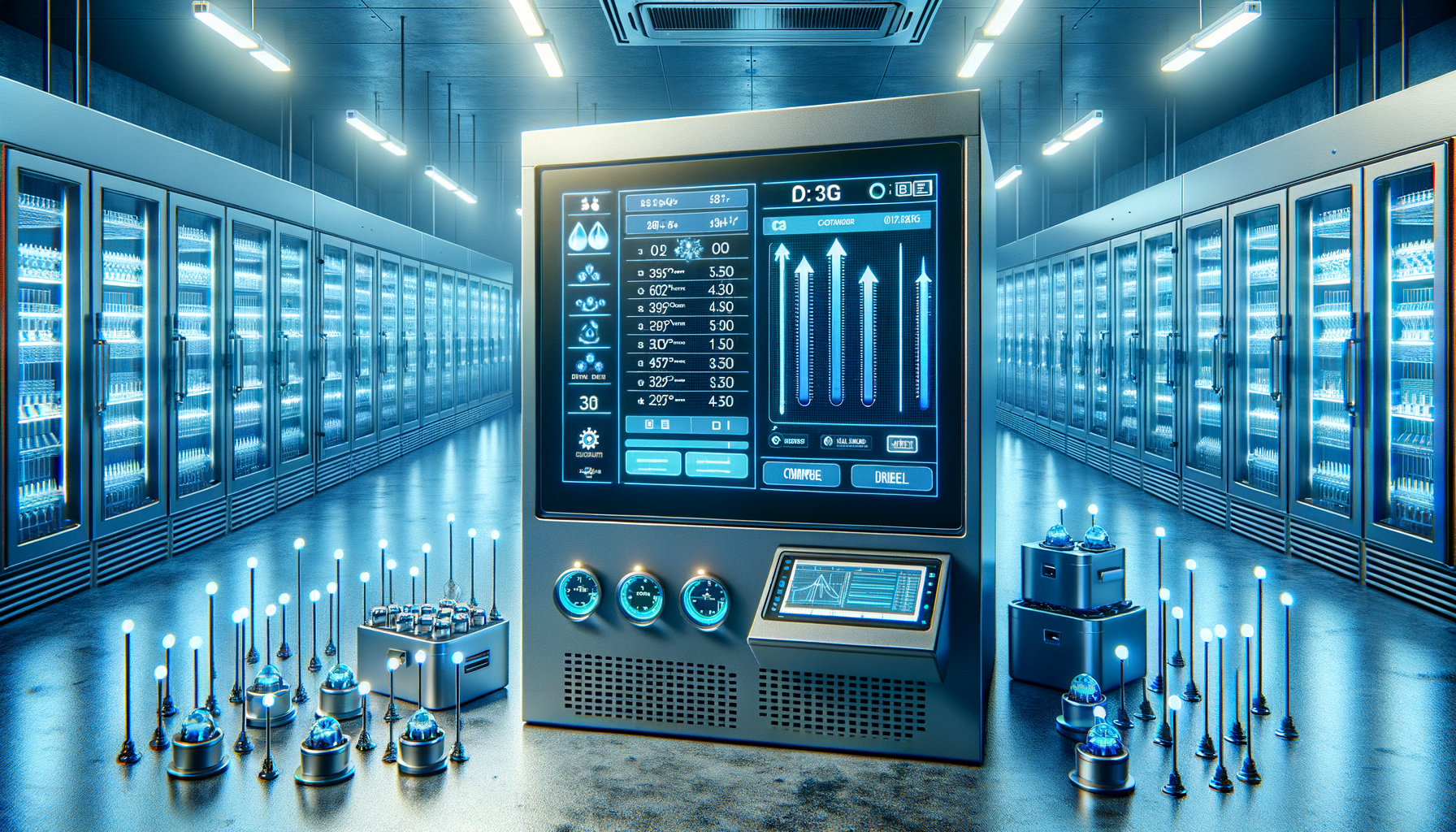Cold Room Temperature Monitoring System: Essential for Quality Control and Compliance
Cold room temperature monitoring involves the systematic tracking of temperature levels in environments where temperature control is critical, ensuring that conditions remain within specified limits to preserve the integrity of stored items.

Introduction to Cold Room Temperature Monitoring
In industries where temperature control is paramount, cold room temperature monitoring plays a critical role. It involves the systematic tracking of temperature levels in controlled environments, ensuring that conditions remain within specified limits. This is essential for preserving the integrity and quality of stored items, such as food products, pharmaceuticals, and sensitive materials.
Cold room temperature monitoring systems are designed to provide real-time data and alerts, helping businesses maintain compliance with regulatory standards and avoid costly spoilage. As technology advances, these systems have become more sophisticated, offering features like remote monitoring, data logging, and automated alerts. By understanding the importance and functionality of these systems, businesses can enhance their operational efficiency and product quality.
Components and Functionality of Temperature Monitoring Systems
Temperature monitoring systems for cold rooms typically consist of several key components that work together to ensure optimal environmental conditions. These components include sensors, data loggers, alarms, and software platforms.
Sensors are strategically placed within the cold room to measure temperature at various points. These sensors are often wireless, allowing for easy installation and maintenance. The data collected by the sensors is then transmitted to data loggers, which store the information for analysis and reporting.
Alarms are an integral part of the system, providing immediate alerts if temperatures fall outside the specified range. These alerts can be sent via email, SMS, or through a dedicated app, allowing for quick response to potential issues.
The software platform is the brain of the operation, offering a user-friendly interface for monitoring and managing the system. It allows for real-time data visualization, historical data analysis, and the generation of compliance reports. Together, these components form a comprehensive solution for maintaining temperature control in cold rooms.
Benefits of Implementing Temperature Monitoring Systems
Implementing a cold room temperature monitoring system offers numerous benefits, enhancing both operational efficiency and product quality. One of the primary advantages is the ability to maintain consistent temperature levels, which is crucial for preserving the quality of perishable goods.
These systems also help businesses comply with regulatory standards, such as those set by food safety authorities. By providing accurate and reliable data, companies can demonstrate their commitment to quality control and avoid potential fines or legal issues.
Additionally, temperature monitoring systems offer cost savings by reducing spoilage and waste. With real-time alerts, businesses can quickly address any issues, minimizing the risk of product loss. The data collected by these systems can also be used to optimize energy usage, further reducing operational costs.
Overall, the implementation of a temperature monitoring system is a proactive step towards ensuring product integrity and operational excellence.
Challenges and Considerations in Temperature Monitoring
While temperature monitoring systems offer significant benefits, there are also challenges and considerations to keep in mind. One of the primary challenges is the initial cost of installation and setup. However, the long-term savings and benefits often outweigh these initial expenses.
Another consideration is the need for regular maintenance and calibration of the sensors to ensure accurate readings. This requires a commitment to ongoing system management and potential updates to the software platform.
Data security is also a concern, as these systems often rely on cloud-based platforms for data storage and analysis. Ensuring that data is protected from unauthorized access is crucial for maintaining the integrity of the monitoring system.
Despite these challenges, the benefits of a well-implemented temperature monitoring system far exceed the potential drawbacks, making it a worthwhile investment for businesses in temperature-sensitive industries.
Future Trends in Temperature Monitoring Technology
The future of cold room temperature monitoring technology is promising, with advancements in IoT and AI driving innovation. IoT-enabled sensors are becoming more sophisticated, offering greater accuracy and reliability. These sensors can communicate with other devices, creating a connected ecosystem that enhances monitoring capabilities.
Artificial Intelligence is also playing a role in the evolution of temperature monitoring systems. AI algorithms can analyze data patterns to predict potential issues before they occur, allowing for proactive maintenance and issue resolution.
Additionally, the integration of blockchain technology is being explored to enhance data security and transparency. By providing an immutable record of temperature data, blockchain can ensure the integrity of compliance reports and audits.
As these technologies continue to develop, cold room temperature monitoring systems will become even more robust and efficient, offering businesses new opportunities to optimize their operations and ensure product quality.